It’s likely that I’m more interested in bird behaviors than some of my readers – if so I hope you’ll bear with me through this post. Even though the light was terrible for photography much of the time, witnessing this odd behavior was a treat for me.
As most folks who try to photograph harriers know, they’re generally an elusive quarry and difficult to get close to. Occasionally you may get a close fly-by if you’re lucky but yesterday I had an experience with a harrier that I had never seen before and I’ve spent a lot of time around harriers.
Mia and I first found the bird (a young male just transitioning to adult plumage) perched close to the road and as we attempted to get close for some shots it lifted off, just as we expected. I assumed it was long gone as usually happens with these birds but that’s not how it turned out.
1/1000, f/5.6, ISO 500, 500 f/4, 1.4 tc
As we were preparing to drive further down the road we noticed the harrier coming back and it landed quite close to us again. Very unusual, so we decided to hang around and see how the cards played out.
1/1000, f/5.6, ISO 500, 500 f/4, 1.4 tc
The harrier began to call. Sometimes it sounded like the typical harrier call that I’ve heard so many times in the past but occasionally this bird sounded different – Mia thought it sounded almost like a parrot.
1/1000, f/5.6, ISO 500, 500 f/4, 1.4 tc
It stayed on the same perch for a couple of minutes, calling much of the time and then took off…
1/2000, f/5.6, ISO 640, 500 f/4
and landed very close to us again. It stayed for a few seconds and then took off again. At this point I had taken off my teleconverter because he was so close I was clipping too many shots.
1/2000, f/5.6, ISO 640, 500 f/4
Take off.
1/2500, f/5.6, ISO 640, 500 f/4
Take-off continued.
1/2500, f/5.6, ISO 640, 500 f/4
Getting up to speed. He would fly a short distance up the road, turn around again…
1/2500, f/5.6, ISO 640, 500 f/4
and then come back our way
1/3200, f/5.6, ISO 640, 500 f/4
and land quite close to us again. For some reason he was very reluctant to leave the immediate area. I wondered if he had a freshly killed meal nearby but I don’t think that was indicated by his behavior.
1/2500, f/5.6, ISO 640, 500 f/4
He stayed on this perch for a few seconds
1/2500, f/5.6, ISO 640, 500 f/4
and then took off once again.
1/3200, f/5.6, ISO 640, 500 f/4
Flew a short distance
1/2500, f/5.6, ISO 640, 500 f/4
and landed again. For over 45 minutes this bird repeated the same pattern – land for a few seconds or minutes (often calling when perched) then take off and land somewhere very close along the same side of the road. Sometimes he landed in relatively open raised areas (as in these photos) and other times in deep vegetation but I’m certain he wasn’t hunting. I’ve seen these birds hunting enough to easily recognize it. In the time I watched him I’d estimate that he repeated this take-off/landing behavior roughly 20 times, all in the same 100′ or so of the side of the road.
I’ve wondered if it could have been some kind of territorial display directed at other harriers but for most of this 45 minutes there were no other harriers in the vicinity that I was aware of, although twice during that time period another male flew in from the east and this bird chased him off.
1/2500, f/6.3, ISO 640, 500 f/4
At one point the male flew way out over the ice to intercept this female but he certainly wasn’t aggressive toward her (though it may look like it in this photo) – in fact they seemed quite playful with each other. They flew together like they were enjoying each others company, performed a few interactions like you see in this image, then the male returned to the same area as before (very near to us) with the female following him. She landed along the road but not very close to the male and very soon she flew off and we didn’t see her again.
Other than the repeated landing and taking off in the same small area what surprised me most about this whole event was just how tolerant this male was toward us. Many times he flew by us at a distance of 20′ or less as he cruised up and down the side of the road – much too close for photos in flight with my lens. He never seemed aggressive toward us or acted like our presence bothered him at all – most of the time he simply ignored us and didn’t even look our way.
I’ve done some research on BNA Online and elsewhere but haven’t come up with any reasonable explanation of this behavior.
Ron


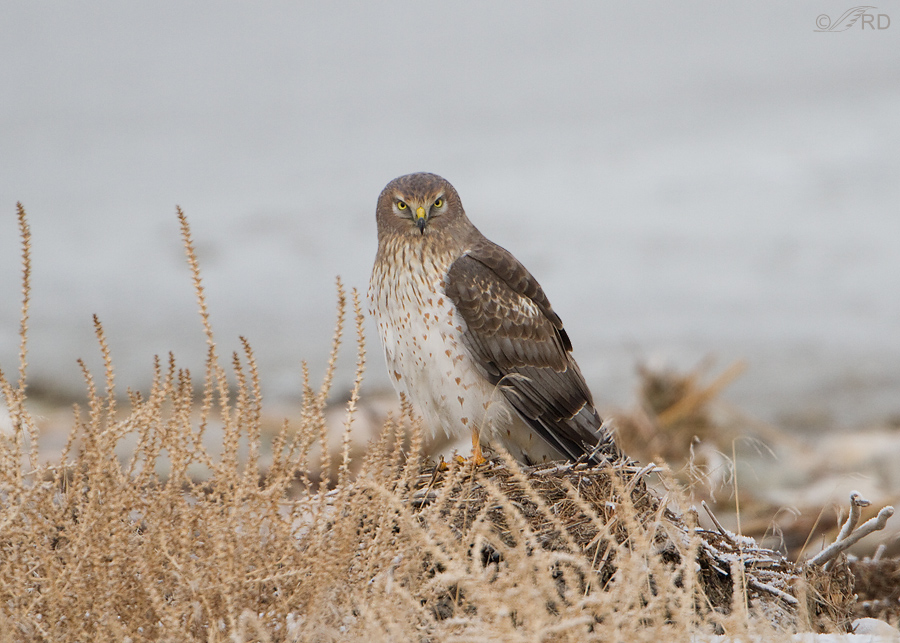
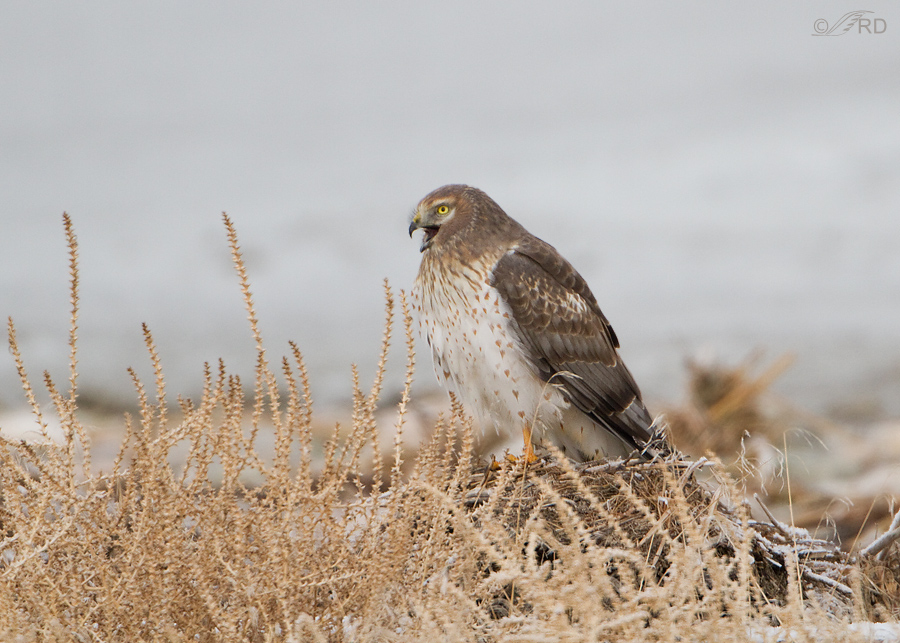
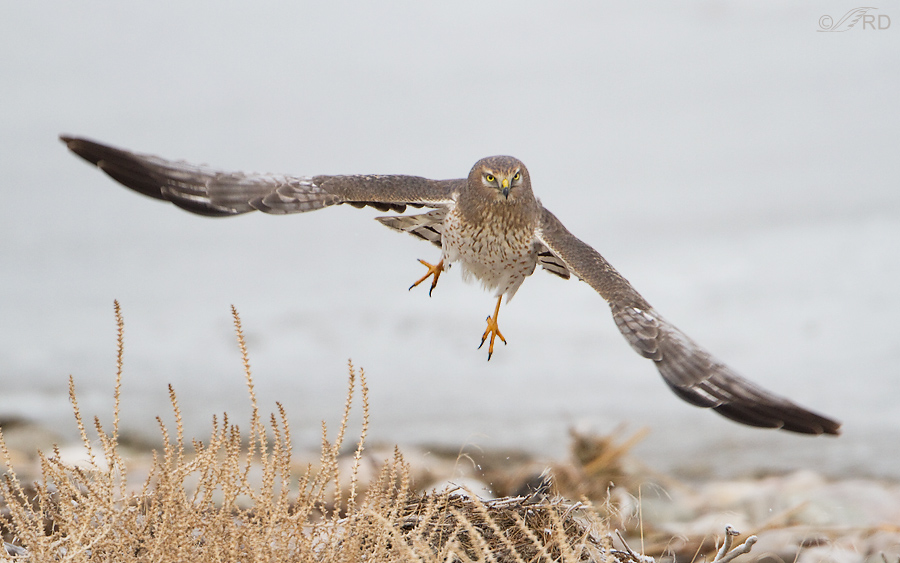
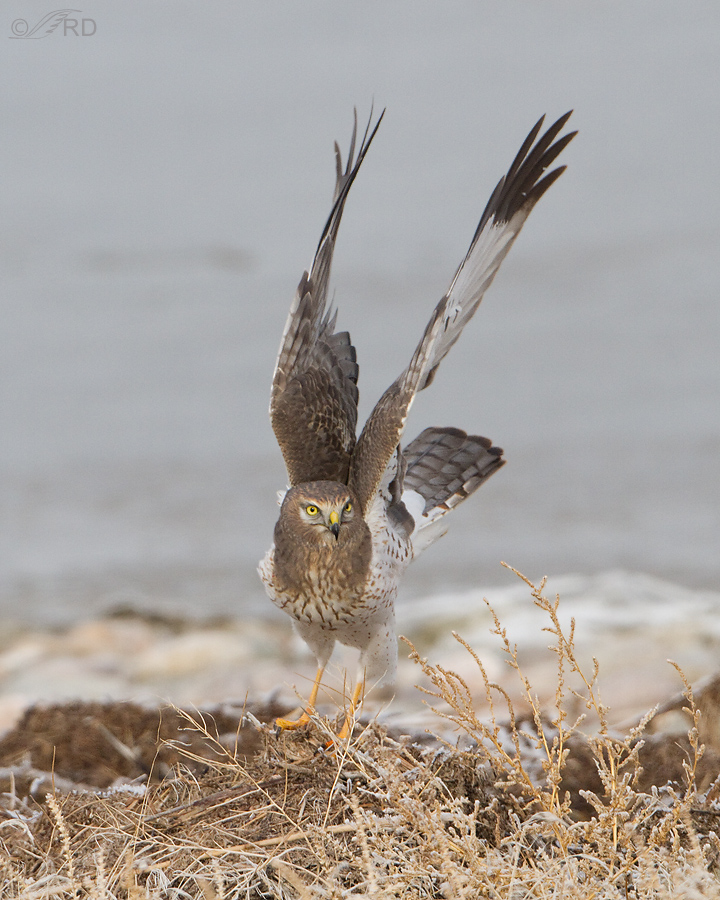
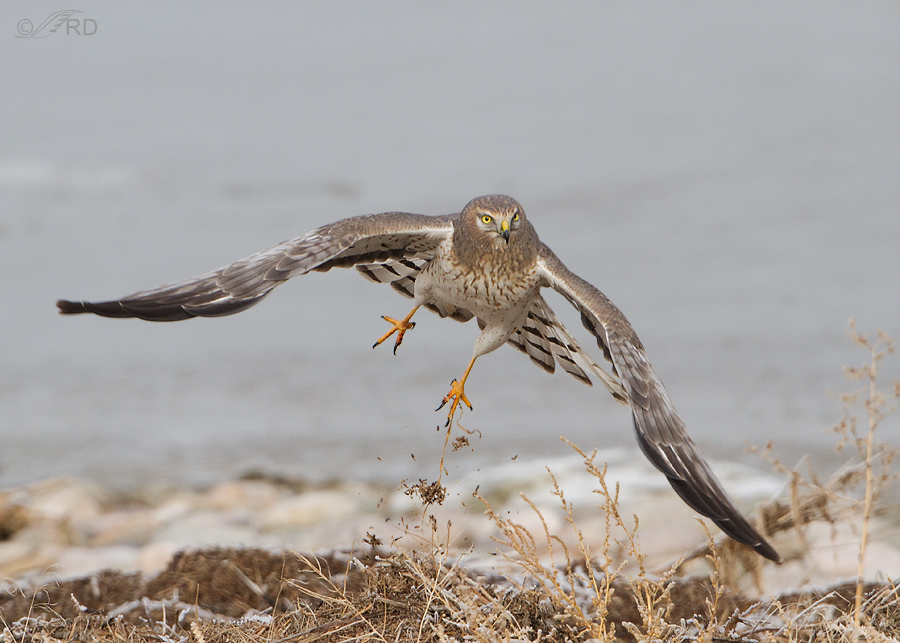
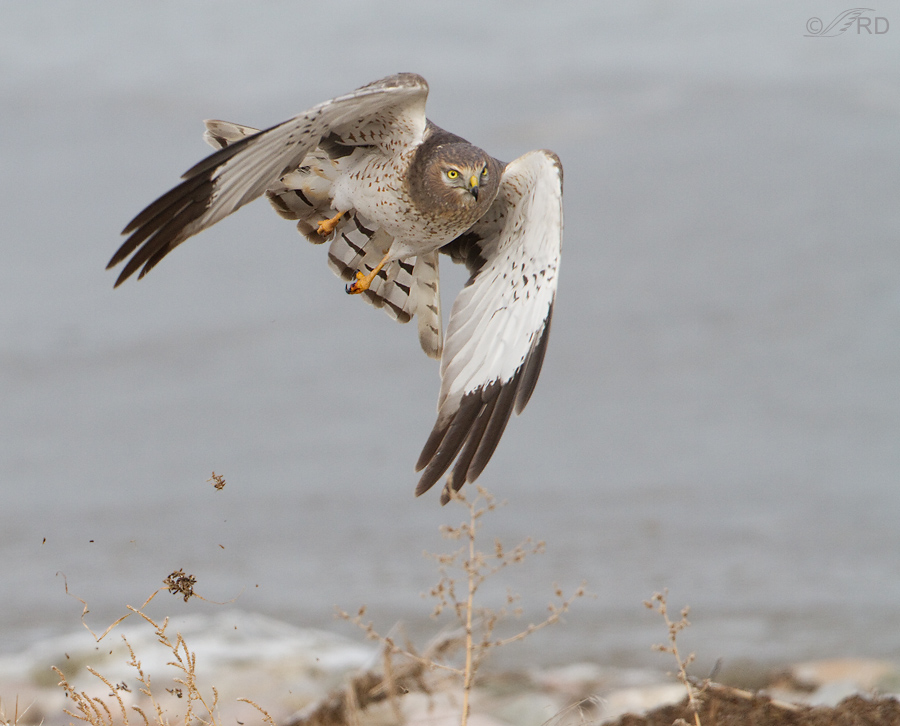
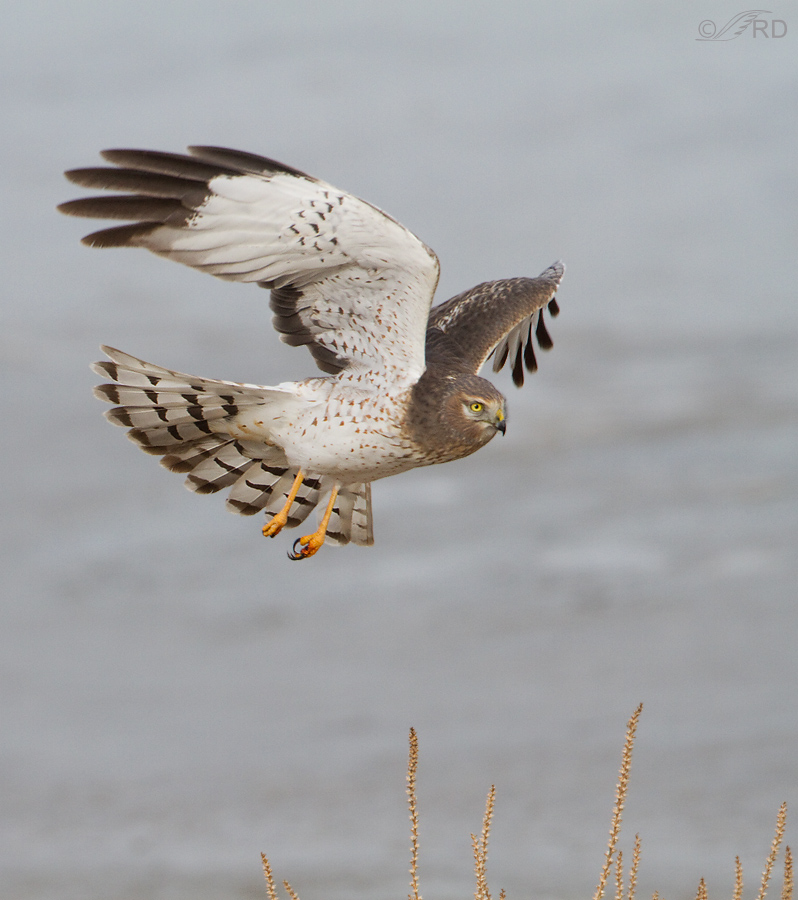
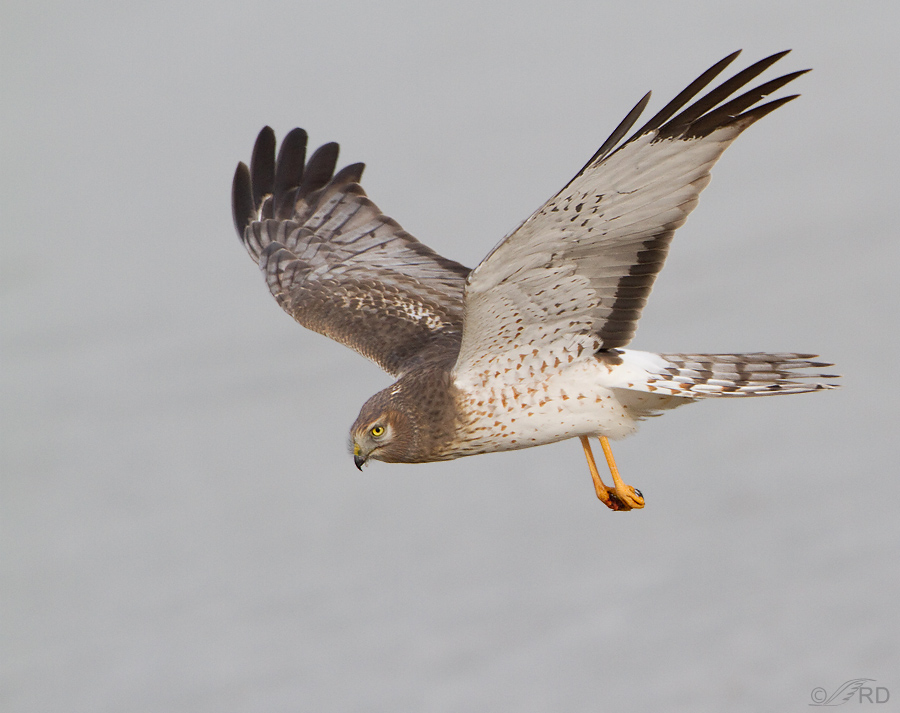
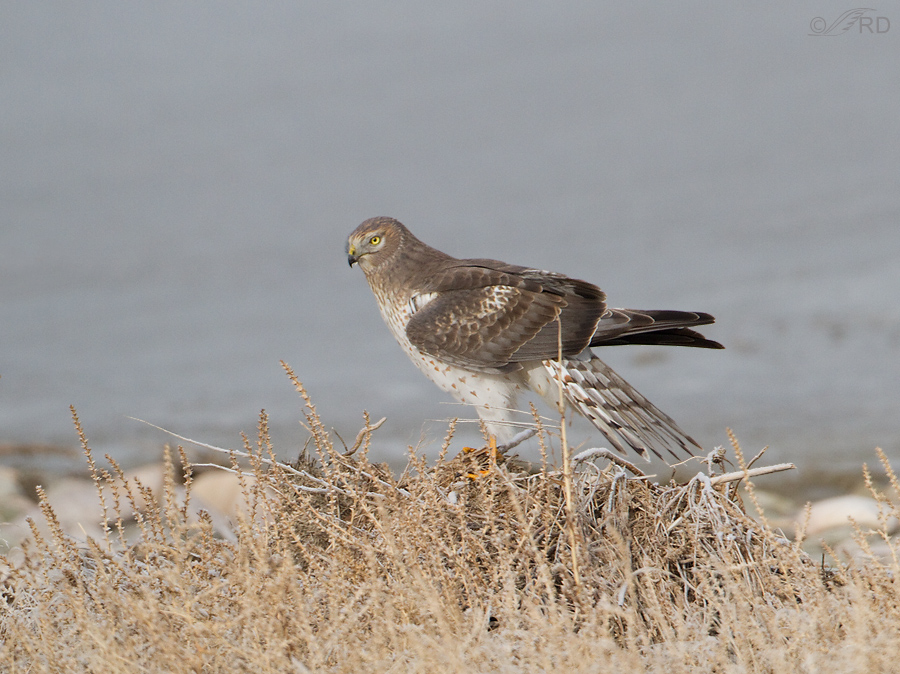
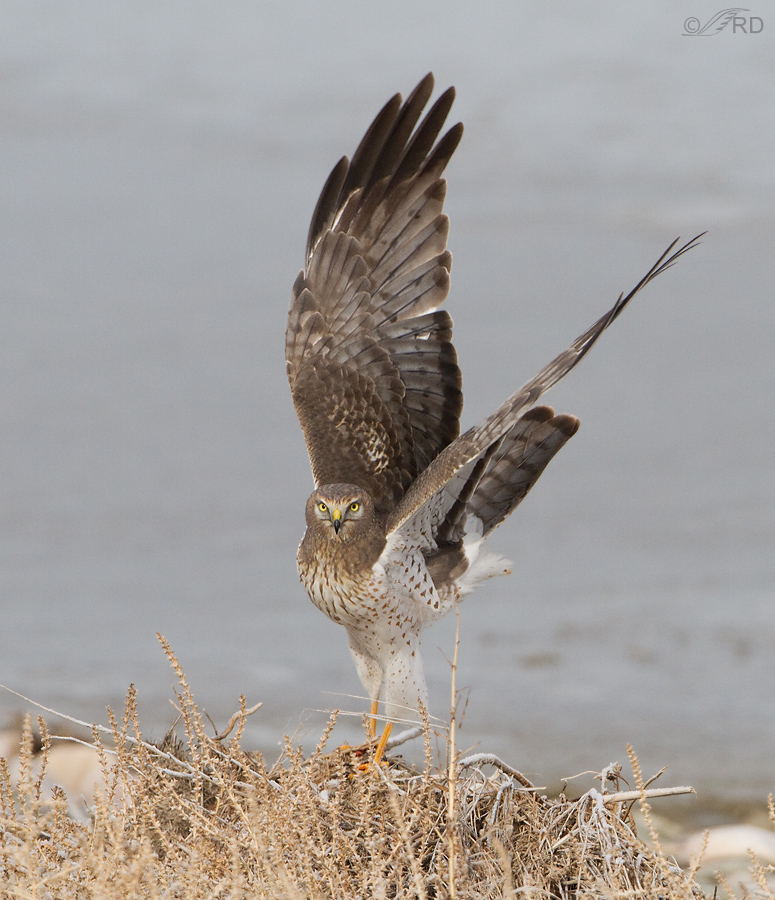
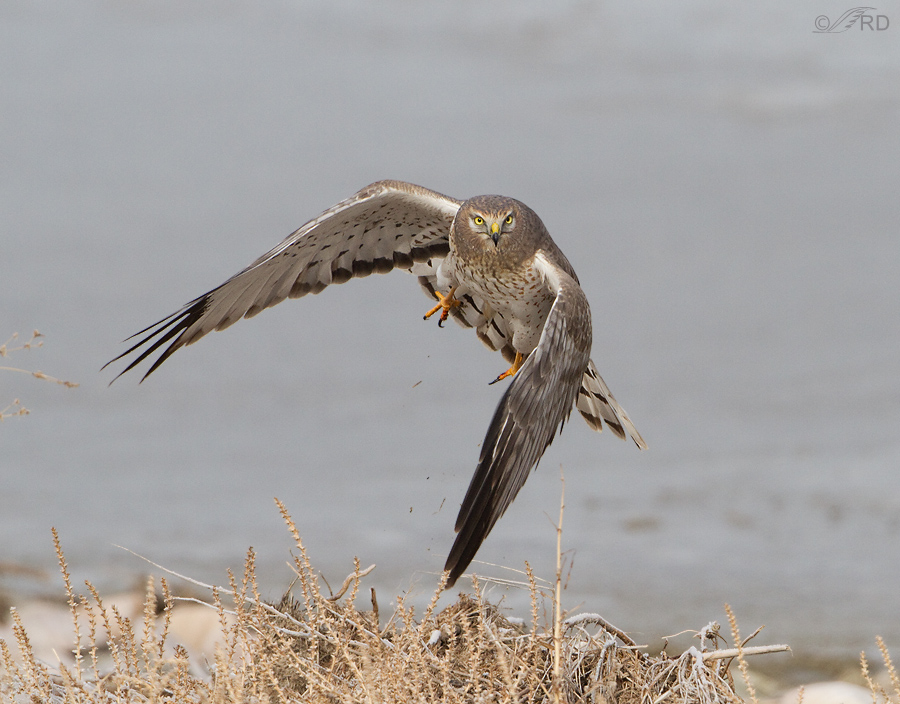
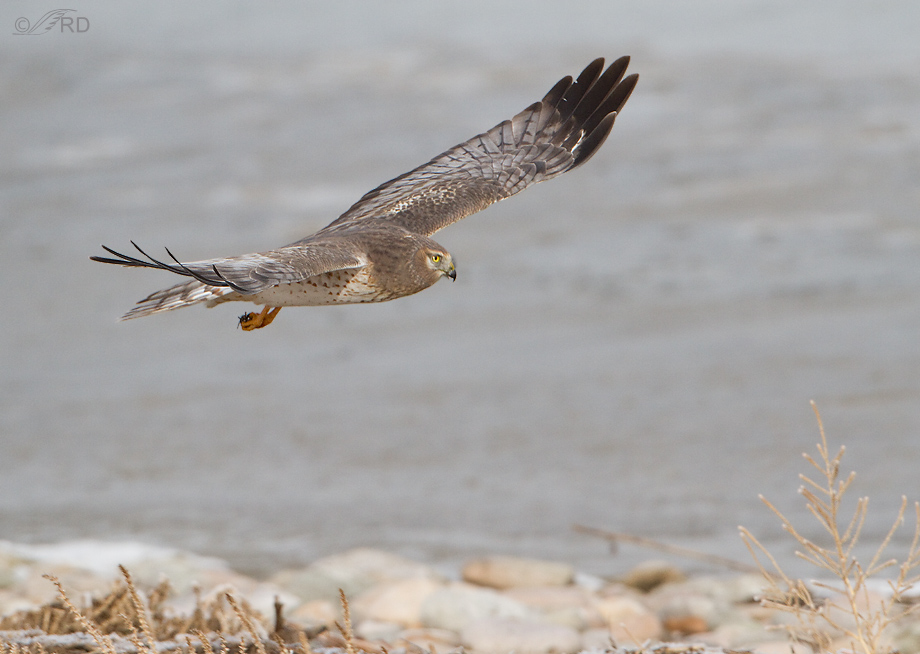
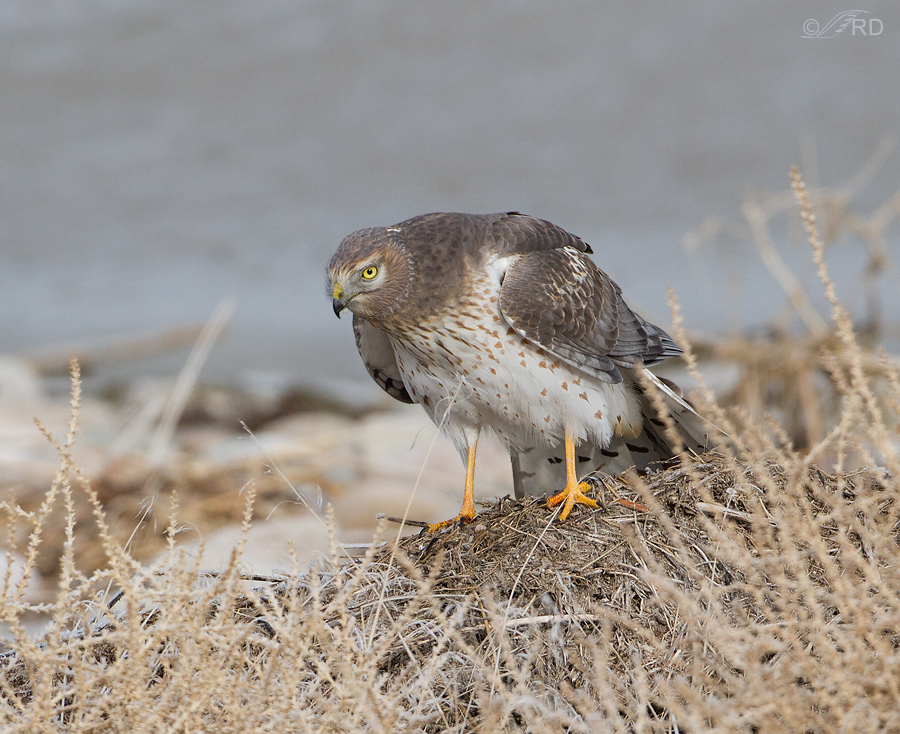
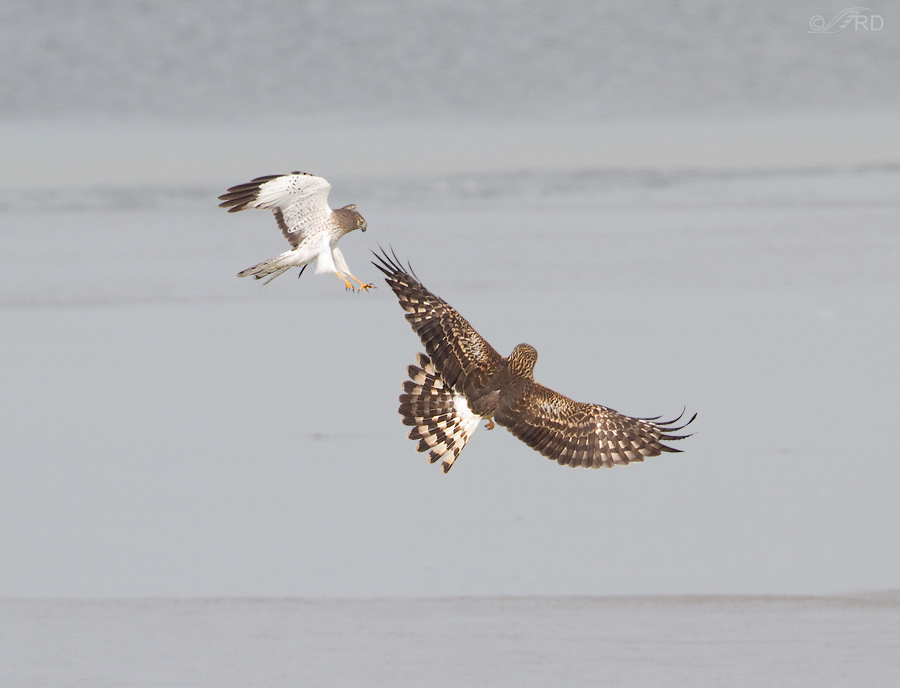
A similar incident happened yesterday when a friend and I returned from a trip here in midcoast Maine. Near my house, at the head of the long driveway bordered by meadow and stream, what I think was a harrier was sitting on a rock. It didn’t move as our car pulled right along side, maybe 3 feet away, to stop and look. Then we continued on up the driveway and my friend turned the car around. I got out, and as I shut the car door the harrier flew a short distance away, landing first at the side of the road and then back in the driveway. It didn’t move as my friend inched the car down the driveway right up to it – she waited for a few minutes, then beeped the horn, at which point it flew a few feet further down the drive – and this process repeated itself several times, more short flights, more horn beeping. I didn’t get a picture and don’t know enough to make a definite i.d. but the breast was a very pale orange with brown streaking – a young male?
Dudley, yes the incident you describe sounds similar to what I saw and photographed. It’s particularly unusual in harriers as they are nearly always very difficult to approach. I still don’t understand the behavior. As far as ID of harriers goes, probably the easiest identifying feature is the white rump patch (both sexes) at the top of the base of the tail – it can be seen in several of my photos.
Great phptos-thank you. My NW Dallas Tx back yard has been host for 12 days to a N. Harrier Just “hanging out” in our huge oaks trees. All day 7am to 6pm he sits on one or two favorite branches, 15 to 30 feet up (though one day he was tw0 hours prox 12 feet up ) fixes feathers, watches us and all other birds/creatures (squirrels, mice) he may fly 10 to 40 feet to neighbor tree play with a stick (etc) then return to watch us, even when we sit on the patio below him with a fire in the chiminea. Other birds a little cautious come eat at the feader as usual. The screech owl sleeps in the door to her owl box on warm days as if he were not there. At prox 6pm he streatches wings, turns two-three times and flies away to a neighbor tree, calls twp tp four times then flys again out of view. Returns in the morning. We have seen him eating a rat three times-very early morning. No catches in day time. What is this behavior!?
Delightful to us to see such a lovely bird so long and so close,but is he ok (to like humans)? This Harrier is pearly gray on face and around eyes. more white than pale gray on chest-still with the pale reddish nertical strips on chest. Tail when viewed from top (folded) has no stripes-tannish light brown.
We can see white rump when he flys and dark wing tips-and tail stripes from under view.(but not on top of folded tail.)
Sorry for details and not a photo-
Many birders I know do not have interest in BEHAVOUR-your Harrier was unusual in that and is “mine”\Thank you
perhaps you interest and experience could answer my questions!
Mary Ann
Thanks Mary Ann. And I must admit to some confusion as to what’s going on. Based on your description of the behavior it sounds unlike a harrier for it to spend so much time in the tree, “no catches in day time” and not to be out hunting in their typical manner during the day. But typically they consume their prey in the field without bringing it to a perch so perhaps you haven’t seen the “catches”. But your physical description sounds fairly close to a male harrier (but keep in mind I’m more of a bird photographer than a birder and not terribly strong on ID). How sure are you of the harrier ID? The white rump does sound fairly definitive. Does it have the harrier facial disc? Any chance for a photo in the future? If this is a harrier, I’d agree that the behavior is unusual.
Great shots!
That is strange indeed. I have a hard time getting close to the Harriers, they are private birds usually. But you captured some beautiful shots!
Interesting behavior and great photos!
As we have recently found out about Bears and various other animals, the relations with siblings and other family members do not entirely cease when a brood breaks up. This bird may have been calling for a brother or sister to come to him. That female may have been a sister or an aunt.
Hmmmm, hadn’t thought about that possibility.
Mating/breeding behaviour leapt to my ignorant Aussie mind as well. I find the behaviours of birds fascinating. As I develop a better knowledge of the birds we often see I can better predict their behaviour – until the exception which proves the rule appears.
I loved these shots – thankyou so much.
Perhaps some sort of mating behavior or maybe protecting something like an injured mate?
I wondered about the possibility it was breeding behavior, especially when I saw the male fly out to the female over the ice and they were so (apparently) cordial to each other when they met up. I’m unsure at what age these young males begin their interest in breeding activities. Perhaps he’s confused, frustrated and unsure of himself at this young age (reminds me of another warm blooded, bipedal species…)